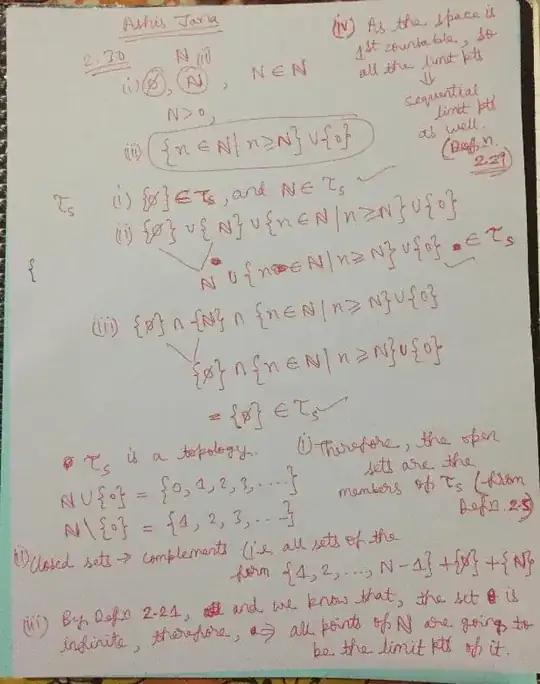Need help here guys, In problem 2.26, I dont have an example which satisfies both the criteria. Each and every time, I am getting either of them but not both of them.
In example 2.30, I am not sure but I think open sets are going to be the set of natural numbers (symbolized as N) and closed sets will be {0} and empty set. But I dont know the limit points and other parameters.
In 2.32, I am completely clueless as to what its asking , because if x is a limit point of Y, then it implies that it can be a sequential limit point of Y. But here, its asking me the opposite.
I did this for 2.30, but my instructor told me to explain the points (ii) and (iii) while verifying that Ts is a topology. He told me that you will have to show the other ones too since its just not those elements but also its a finite sub-collection of elements of T for union and intersection. I don't know how many to show, since its an entire set of Natural nos.
Any help will be greatly appreciated. Thanks!!



